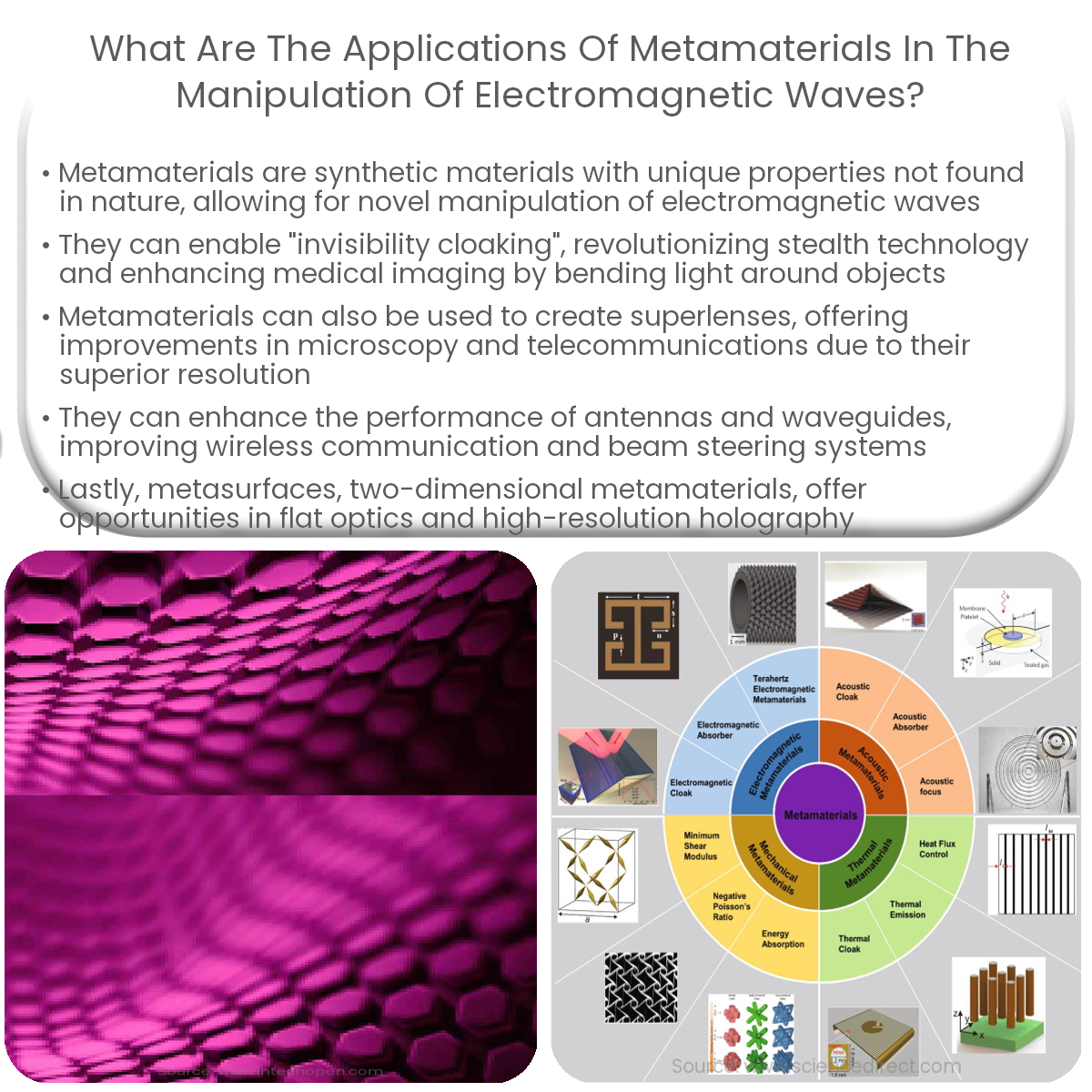Metamaterials can manipulate electromagnetic waves for invisibility cloaking, superlenses, advanced antennas, waveguides, and metasurfaces.
Introduction to Metamaterials
Metamaterials are synthetic materials engineered to possess properties not typically found in nature. By manipulating their geometric structure, scientists can control the ways in which these materials interact with electromagnetic waves. This has led to a wide range of applications, some of which are discussed below.
1. Invisible Cloaking
One of the most fascinating applications of metamaterials is their ability to manipulate electromagnetic waves for the purpose of creating “invisibility cloaks”. These materials can bend light around an object, making it appear invisible to the human eye.
Invisibility Cloaking for Military Applications: Metamaterials have the potential to revolutionize stealth technology by hiding military equipment from radar detection.Medical Imaging: Invisibility cloaking could be used to enhance medical imaging techniques by selectively shielding certain areas, allowing for a clearer image of the target area.
2. Superlenses
Metamaterials can also be used to create superlenses, which surpass the resolution limits of conventional lenses. This is made possible by the unique properties of metamaterials, which can focus light on much smaller scales.
Microscopy: Superlenses can significantly improve the resolution of optical microscopes, enabling researchers to study the nanoscale world in greater detail.Telecommunications: Superlenses could enhance the performance of optical communication systems by improving signal transmission and reducing losses.
3. Antennas and Waveguides
Metamaterials can be used to construct antennas and waveguides with improved performance characteristics, enabling more efficient transmission and reception of electromagnetic signals.
Wireless Communication: Metamaterial-based antennas can lead to improved signal reception, longer range, and reduced interference in wireless devices.Beam Steering: Metamaterials can be used to design beam-steering systems that direct electromagnetic waves with high precision, which is crucial for applications like radar and satellite communication.
4. Metasurfaces
Metasurfaces are two-dimensional metamaterials that can manipulate electromagnetic waves on their surface. These ultrathin structures offer new opportunities for controlling light at the nanoscale.
Flat Optics: Metasurfaces can replace bulky optical components, enabling the development of thinner and lighter devices.Holography: Metasurfaces can be used to create high-resolution holographic displays and data storage devices.
In conclusion, metamaterials have the potential to transform a wide range of industries by enabling unprecedented control over electromagnetic waves. As research in this field progresses, we can expect to see even more innovative applications emerge.


